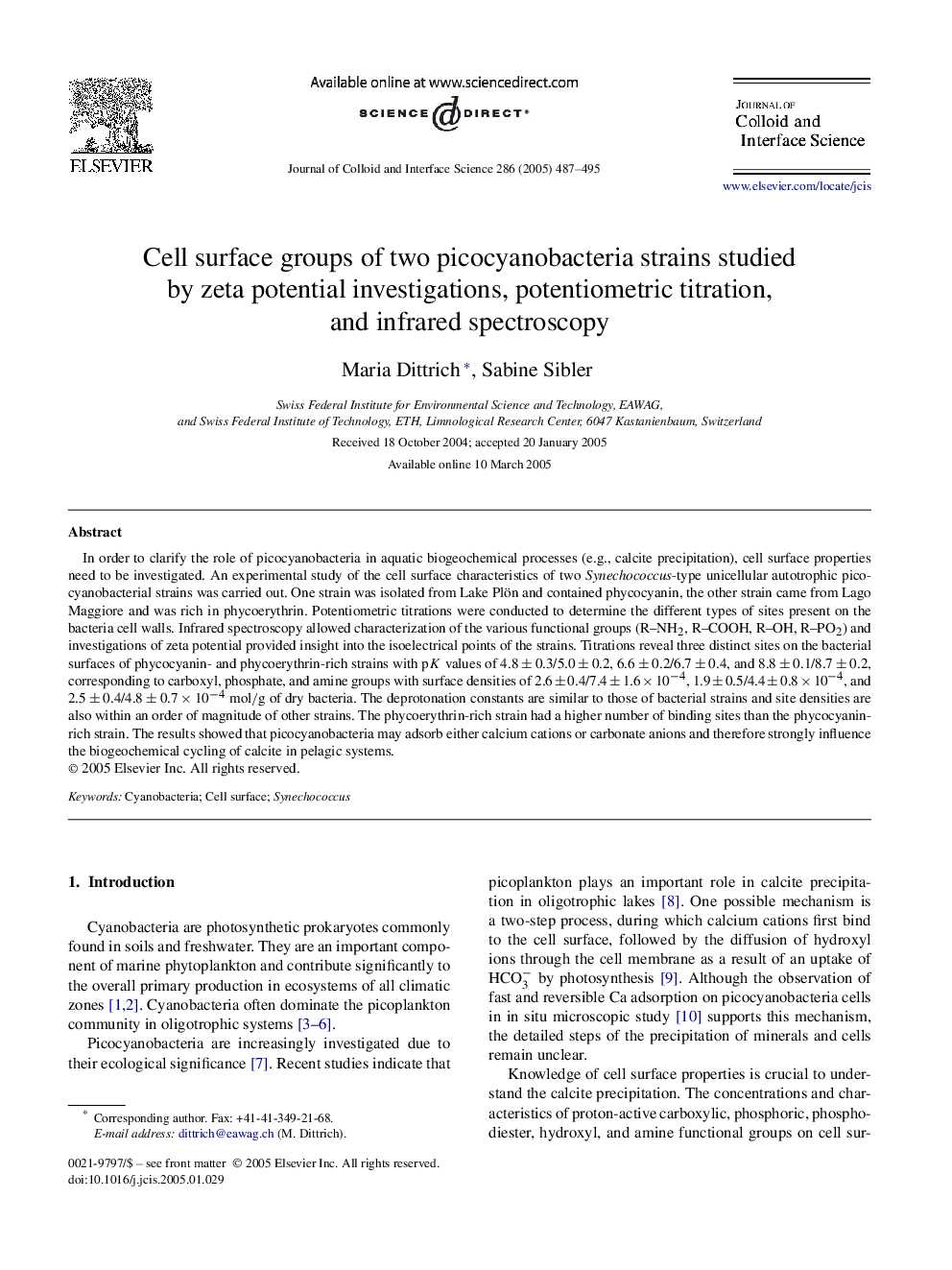| Article ID | Journal | Published Year | Pages | File Type |
|---|---|---|---|---|
| 10377960 | Journal of Colloid and Interface Science | 2005 | 9 Pages |
Abstract
In order to clarify the role of picocyanobacteria in aquatic biogeochemical processes (e.g., calcite precipitation), cell surface properties need to be investigated. An experimental study of the cell surface characteristics of two Synechococcus-type unicellular autotrophic picocyanobacterial strains was carried out. One strain was isolated from Lake Plön and contained phycocyanin, the other strain came from Lago Maggiore and was rich in phycoerythrin. Potentiometric titrations were conducted to determine the different types of sites present on the bacteria cell walls. Infrared spectroscopy allowed characterization of the various functional groups (RNH2, RCOOH, ROH, RPO2) and investigations of zeta potential provided insight into the isoelectrical points of the strains. Titrations reveal three distinct sites on the bacterial surfaces of phycocyanin- and phycoerythrin-rich strains with pK values of 4.8 ± 0.3/5.0 ± 0.2, 6.6 ± 0.2/6.7 ± 0.4, and 8.8 ± 0.1/8.7 ± 0.2, corresponding to carboxyl, phosphate, and amine groups with surface densities of 2.6 ± 0.4/7.4 ± 1.6 Ã 10â4, 1.9 ± 0.5/4.4 ± 0.8 Ã 10â4, and 2.5 ± 0.4/4.8 ± 0.7 Ã 10â4 mol/g of dry bacteria. The deprotonation constants are similar to those of bacterial strains and site densities are also within an order of magnitude of other strains. The phycoerythrin-rich strain had a higher number of binding sites than the phycocyanin-rich strain. The results showed that picocyanobacteria may adsorb either calcium cations or carbonate anions and therefore strongly influence the biogeochemical cycling of calcite in pelagic systems.
Related Topics
Physical Sciences and Engineering
Chemical Engineering
Colloid and Surface Chemistry
Authors
Maria Dittrich, Sabine Sibler,
